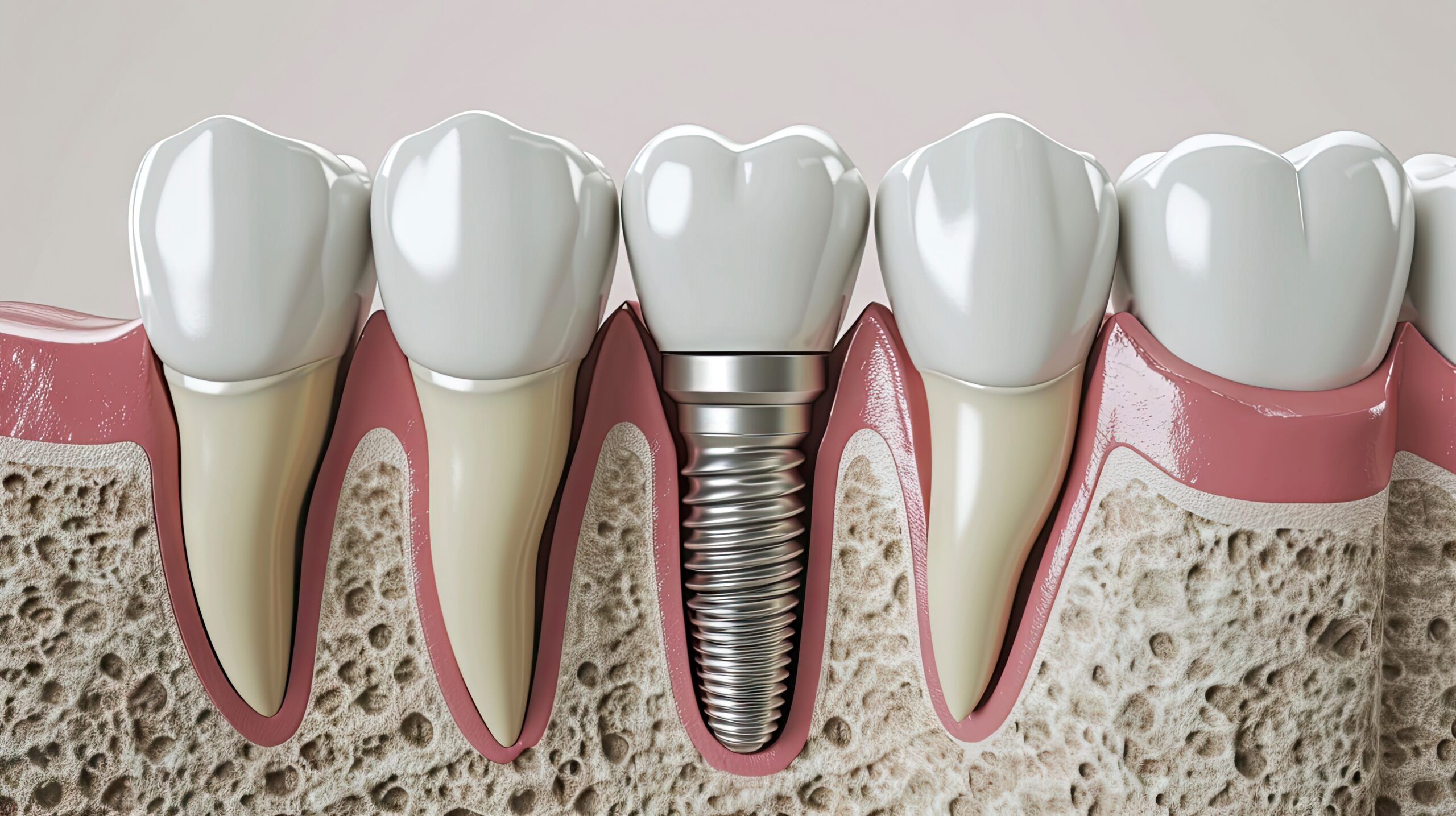The discovery of dental implants has added comfort to patients’ lives. They allow patients with missing teeth to enjoy eating food without trouble and perform other oral functions smoothly. However, the two most common types of implants are usually found hard to figure out. In the following article, let’s understand the key differences between endosteal implants vs subperiosteal implants to figure out a perfect fit for you.

An endosteal implant is different from a subperiosteal implant. Let’s go through the differences between these two types of dental implants.
Endosteal implants are a type of dental implant that is adjusted and placed within the jaw bone. They can be conveniently placed in both jaws. A good and healthy jaw bone is required for their placement. We can only place endosteal implants if the bone has sufficient height, density, and strength.
An endosteal implant has a titanium screw, an abutment, and a crown. The titanium screw is layered with hydroxyapatite powder. This material can initiate bone regeneration. Therefore, it assists in the process of osseointegration. Osseointegration refers to the relationship between the implant and the bone. A successful osseointegration is essential for successful implants.
Unlike endosteal implants, subperiosteal implants are placed above the bone and not within the jaw. This type of dental implant is preferred for patients with thin and less dense jaw bones. Instead of a titanium screw, subperiosteal implants have a metal frame instead of a titanium screw. The metal frame can be made from any of the following materials:
These implants are ideal for patients with missing posterior teeth for a long time. The bone begins to resorb when implants are not placed within a few months to up to one year. Once the bone is resorbed, we can either go for bone grafts and then endosteal implants or subperiosteal implants to restore the regular oral functions of patients with insufficient bone.
The procedures of both endosteal vs subperiosteal implants are stated below.
The procedure of endosteal implants is comparatively invasive as they have to be placed within the jaw bone. The first step involves numbing the tooth, gums, and surrounding region in which we have to work. Then, once the anesthesia is adequate, the gums are incised and opened up.
Next, a hole is drilled in the bone when the titanium screw is placed. Once the bone and screw have healed and osseointegrated, the abutment and crown are attached to the screw. The entire procedure takes about 3 to 6 months. Patients must visit the dentist for follow-up appointments for dental implants aftercare.
Like endosteal implants, the gums are anesthetized to ensure a pain-free and comfortable procedure. Then, the gums are cut, and the metal frame is placed. The metal frame replaces and compensates for the lost bone structure. Once this step is completed, the abutment and crown are attached.
The cost of endosteal and subperiosteal implants is different. In New Jersey, the endosteal implants range between $1100 to $3500. The price of an endosteal implant varies depending on the material of the crown.
On the contrary, a subperiosteal implant costs around $2000 to $5000 for a single missing tooth. In the case of subperiosteal implants, the material of the metal frame plays a decisive role.
Healing of endosteal implants takes more time to heal than subperiosteal implants.
Endosteal implants take an average of 3 to 6 months to heal completely. Certain factors speed up the healing of endosteal implants, including maintaining oral hygiene, brushing, and flossing. These implants take longer to heal owing to the process of osseointegration.
On the contrary, subperiosteal implants take less time to heal because no healing of bone or osseointegration is required.
Endosteal implants are a replica of natural teeth. Their strength, structure, and durability are similar to natural teeth. They are the most stable among all types of implants. Patients can resume eating, speaking, and chewing normally after getting endosteal implants, and people rarely notice a change. The experience and expertise of the dentist play a significant role in the success of endosteal implants.
On the other hand, subperiosteal implants are an ideal replacement when bone density is less. Their strength is less than that of endosteal implants. Avoiding hard food objects to prevent breaking or harming these implants would be beneficial.
There are several important considerations when determining if an endosteal implant is appropriate for a patient. First and foremost, the patient needs to have enough thick and dense bone to sustain the implant. Furthermore, enough bone height is required for the implant’s stable insertion. Endosteal implants are especially well-suited when a single tooth needs to be replaced since they provide an exact restoration without affecting other teeth.
Good gum health is also essential for the implant to be supported and for good integration with the surrounding tissues to occur. Last but not least, it is critical to consider the patient’s general health to ensure they are healthy enough to undergo the implant procedure and the following healing phase.
Several vital indicators guide recommending a subperiosteal implant to a patient. This kind of implant is preferred when there is insufficient bone density and height to support conventional endosteal implants adequately. For patients who are losing several teeth, subperiosteal implants are beneficial since they provide a practical means of restoring the teeth’ function and appearance.
In addition, patients with limited bone width can be accommodated by their design, which is well-suited for narrow bone formations.
Furthermore, because subperiosteal implants can get around this criterion, they may be incredibly tempting to people who would rather not have to undergo bone graft treatments before implant placement.

To sum up, both subperiosteal and endosteal implants have benefits and conditions in which they should be used. It is best to consult a dental implant expert before making your final decision.
Hesed Dental is the hub of dental implant experts in NJ. If you seek endosteal implants or subperiosteal dental implants in NJ, book your appointment today for a budget-friendly and top-notch treatment plan.

Hesed Dental 543 Gorge Road Cliffside Park, NJ 07010
201 941 8877